A healthcare-associated infection (traditionally known as a nosocomial infection) is
acquired during the course of hospitalization.
Which of the following is NOT a predisposing factor of disease?
genetic background
occupation
lifestyle
climate
All of these are predisposing factors of disease.
Which of the following is NOT a communicable disease?
tetanus
Which of the following statements is TRUE?
At least one member must benefit in a symbiotic relationship.
Reservoirs of infections are always inanimate objects.
False
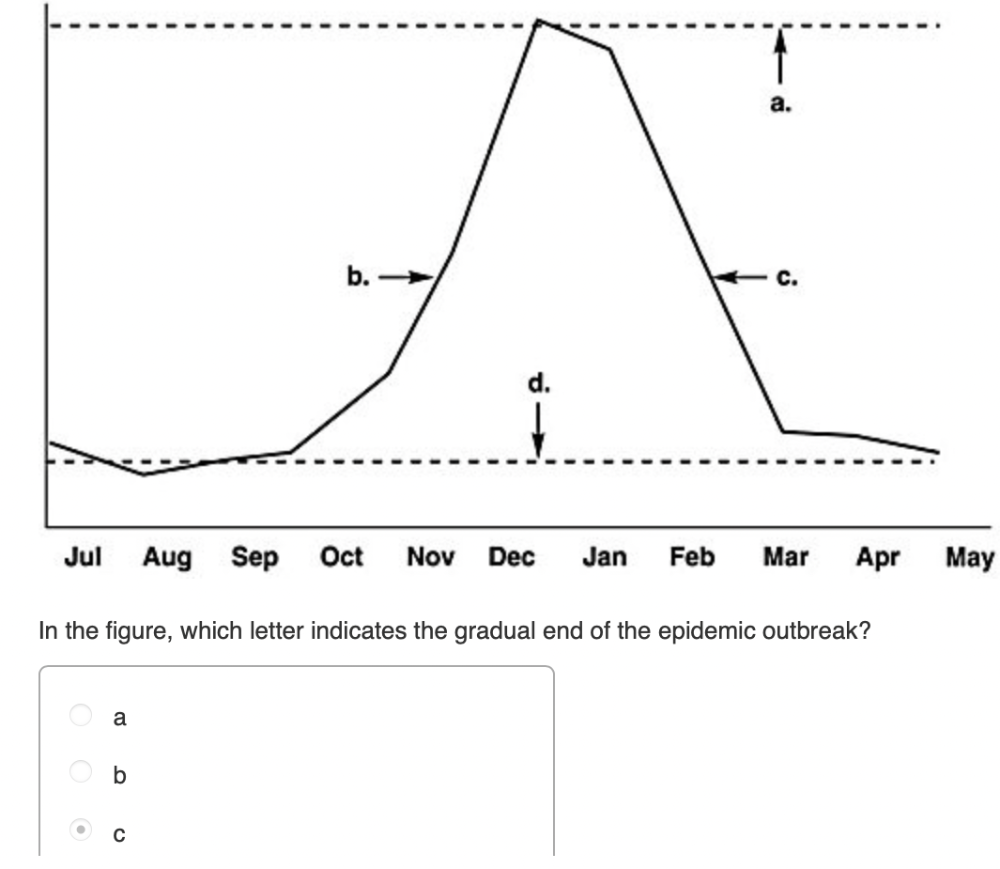
...
Which of the following definitions is INCORRECT?
epidemic: a disease that is constantly present across the world
Testing the effectiveness of a new drug for anthrax would be best performed as an experimental study.
True
If a prodromal period exists for a certain disease, it should occur prior to
illness
Pseudomonas bacteria colonized the bile duct of a patient following his liver transplant surgery. This is an example of a
nosocomial infection.
Transient microbiota differ from normal microbiota in that transient microbiota
are present for a relatively short time.
The rise in herd immunity amongst a population can be directly attributed to
vaccinations
A commensal bacterium
may also be an opportunistic pathogen.
During a six-month period, 239 cases of pneumonia occurred in a town of 300 people. A clinical case was defined as fever ≥ 39°C lasting >2 days with three or more symptoms (i.e., chills, sweats, severe headache, cough, aching muscles/joints, fatigue, or feeling ill). A laboratory-confirmed case was defined as a positive result for antibodies against Coxiella burnetii. Before the outbreak, 2000 sheep were kept northwest of the town. Of the 20 sheep tested from the flock, 15 were positive for C. burnetii antibodies. Wind blew from the northwest, and rainfall was 0.5 cm compared with 7 to 10 cm during each of the previous three years.
vehicle
Which of the following is classified as a latent disease?
shingles
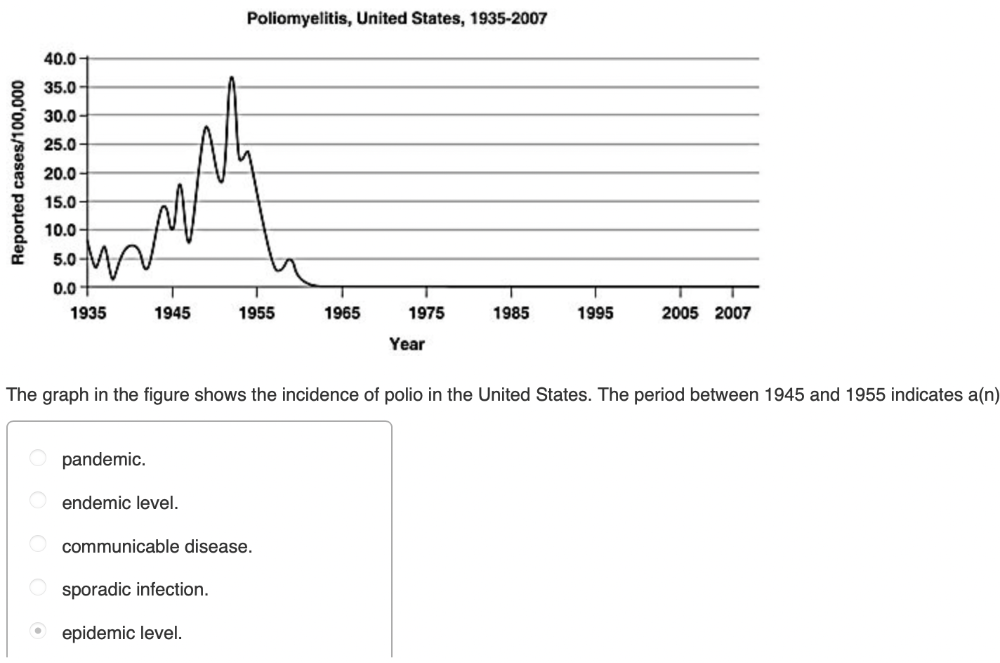
...
Symptoms of disease differ from signs of disease in that symptoms
are changes felt by the patient.
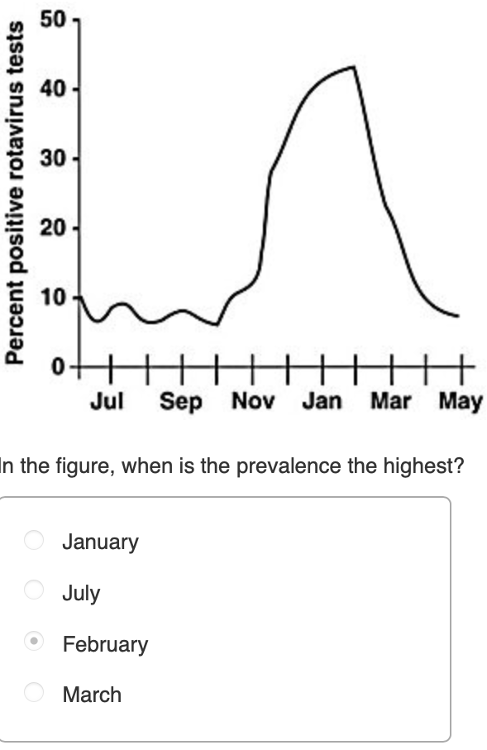
...
Which of the following would be an example of disease transmission via indirect contact?
A student sneezes on her test booklet. The instructor grades it and catches her cold.
One effect of washing regularly with antibacterial agents is the removal of normal microbiota. This can result in
increased susceptibility to disease.Submit
Emergence of infectious diseases can be attributed to all of the following EXCEPT
The emergence of infectious diseases can be attributed to all of these.Submit
In which of the following diseases can gender be considered a viable predisposing factor?
urinary tract infectionsSubmit
Which of the following is NOT an example of microbial antagonism?
bacteria causing diseaseSubmit
During a six-month period, 239 cases of pneumonia occurred in a town of 300 people. A clinical case was defined as fever ≥ 39°C lasting >2 days with three or more symptoms (i.e., chills, sweats, severe headache, cough, aching muscles/joints, fatigue, or feeling ill). A laboratory-confirmed case was defined as a positive result for antibodies against Coxiella burnetii. Before the outbreak, 2000 sheep were kept northwest of the town. Of the 20 sheep tested from the flock, 15 were positive for C. burnetii antibodies. Wind blew from the northwest, and rainfall was 0.5 cm compared with 7 to 10 cm during each of the previous three years.
Coxiella burnetii.
A disease in which the causative agent remains inactive for a time before producing symptoms is referred to as
latent
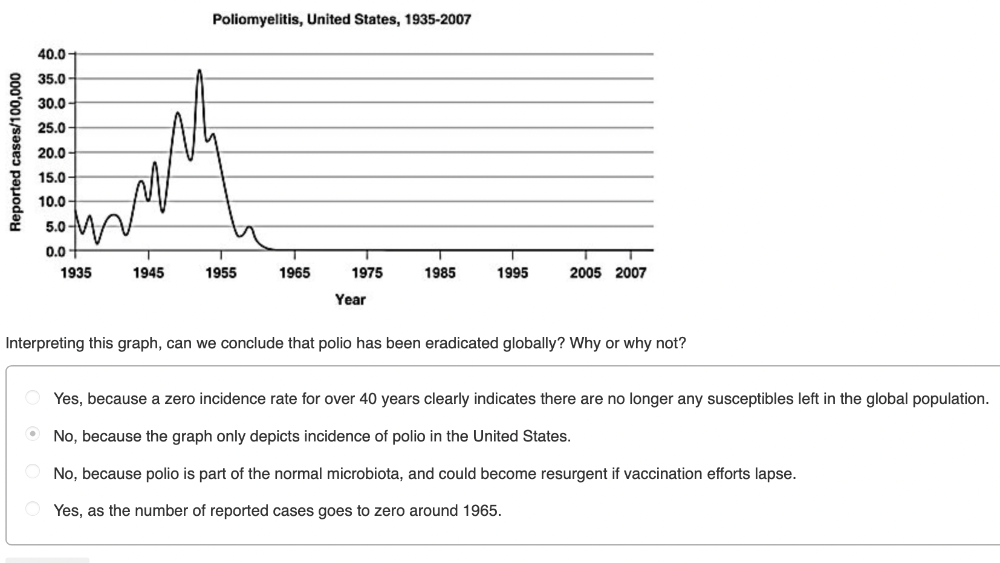
...
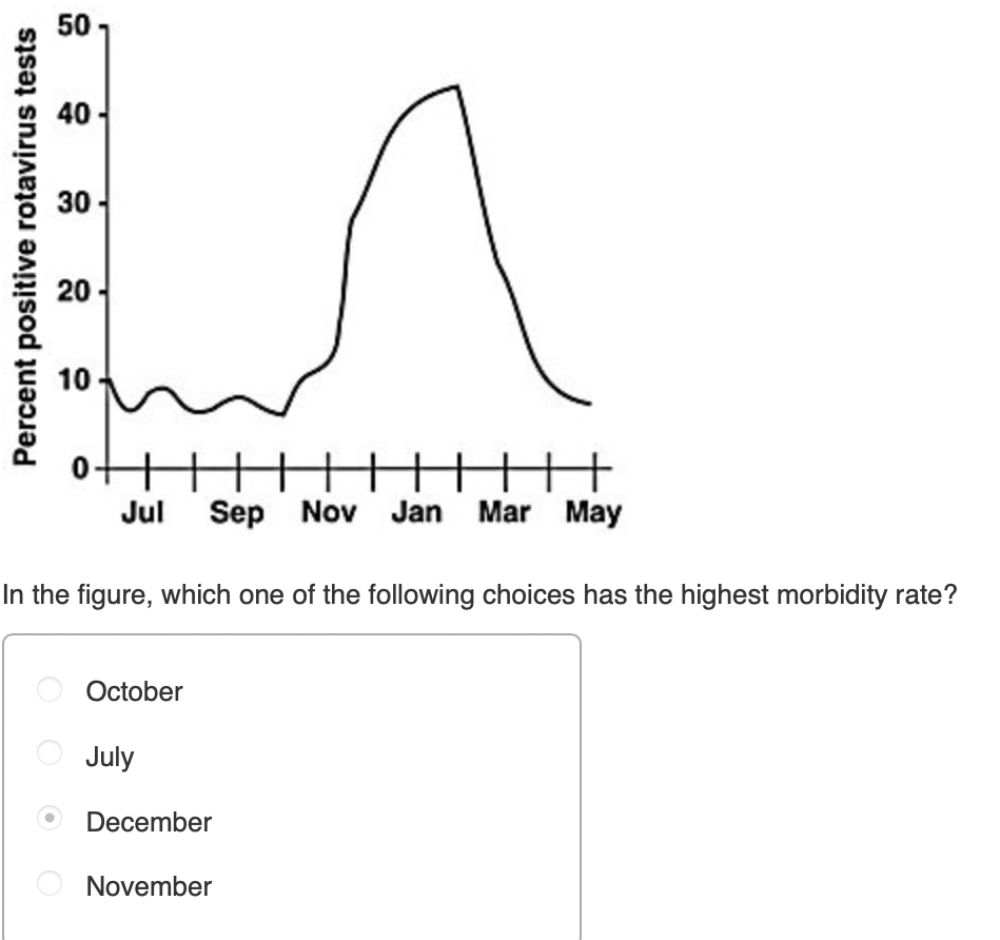
...
Koch observed Bacillus anthracis multiplying in the blood of cattle. What is the condition specifically called when bacteria are multiplying in the blood?
septicemia
Which of the following is a fomite?
a hypodermic needle
Which one of the following does NOT contribute to the incidence of healthcare-associated infections?
gram-negative cell wallsSubmit
A needlestick is an example of
indirect contact transmission by fomite.
The major significance of Robert Koch's work is that
microorganisms cause disease.
Which of the following statements about biological transmission is FALSE?
Houseflies are an important vector.
Both normal and transient flora can become opportunistic pathogens.
True
Biological transmission differs from mechanical transmission in that biological transmission
involves reproduction of a pathogen in an arthropod vector prior to transmission.
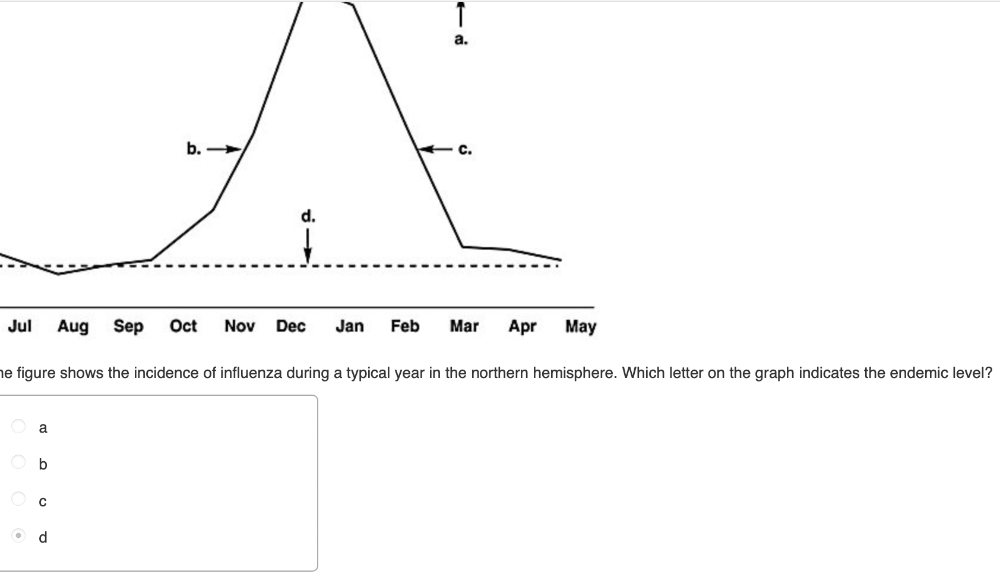
...
Focal infections initially start out as
local infections.
Which of the following diseases is NOT spread by droplet infection?
botulism
The science that deals with when diseases occur and how they are transmitted is called
epidemiology
In which of the following patterns of disease does the patient experience no signs or symptoms?
both incubation and convalescenceSubmit
Which of the following is an example of the symbiotic relationship known as mutualism?
E. coli within the large intestine
Which of the following pairs is mismatched?
malaria – foodborne transmission
Malaria is an infectious disease caused by infection with a protozoan. In certain tropical regions, malaria is constantly present. We would say that malaria is a(n) __________ disease in these regions.
endemic
For a particular disease at a specific time period, morbidity rates should always be equal or greater than mortality rates.
True